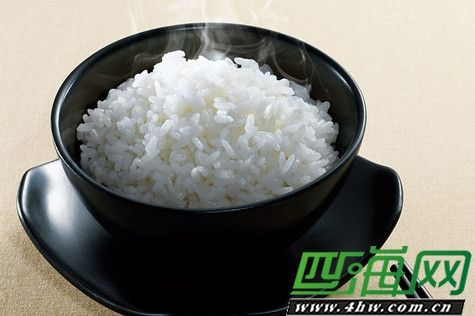I didn't really know how to begin this post-- there's just so much to say about rice. Unfortunately, unless you were brought up in an Asian household or have been in close contact with Asian culture growing up, you won't think too much of rice. To most, there's just basmati, short grain and pudding rice. There are some wholegrain rice like wild rice and black rice but then with the white rice there's just those. Plain rice to you may be incomprehensible. You may be used to eating it as an accompaniment to a curry or a stir-fry, something to soak up the rich juices. It may be fried and tossed with herbs and spices, but you may not have had the opportunity to enjoy good plain rice. Good quality rice, cooked perfectly, is so incredibly fragrant and flavorsome just on its own.
I remember when I was small, in the pre-rice cooker days, how my mother would cook rice on the stove. Wait, before I begin: for each of my "how to" posts, I do some research, but my god with rice everyone just makes it differently. There's especially a big difference between Western and Chinese recipes on the ratio of rice to water. At the end of the day it boils down to the type of rice perhaps, but even so, we're looking at the usual 1:2 in Western recipes to the 1:1 in Chinese recipes. So this post is just about how my Chinese mother makes it, how I like it. Other things mentioned in the post are mainly sourced from Chinese websites. I'm not going to trust Jamie Oliver's tips on rice making, sorry.
It first obviously begins with quality rice. Recipes usually ask you to rinse the rice or even soaking it beforehand. With good rice, you don't have to. That's what my mother says at least. Unfortunately unless you're here in Asia or if you go to specialty shops, it's hard to really find such good quality rice. I think. So I'd say with the rice you find in Europe or wherever you are, rinse first.
Now the ratio of rice to water. My mother would put the rice in the pot. Even it out, then measure the depth of rice with her index finger and mark it with her thumb. Then she'd pour over the water, enough to measure up to the same height when she places her index finger on top of the rice. Some recipes say it's a 1:1.2 ratio. It again depends on the rice, some rice requires perhaps 1:0.75 ratio. Also, remember, start off with cold/room temperature water.
Then put your pot on the stove, cover with lid and bring it to a boil. Then turn the heat down to low immediately. Depending on the quantity, usually for 2-3 people, you're cooking for a further 10 minutes before removing it from heat. Remember to never, ever, lift the lid as you're cooking. In Chinese we call this method of cooking rice, "steaming rice", so really, never lift the lid.
I mean it takes experience. The rice is different, the quantity is different, all that changes the cooking time and the amount of water and other things. So you just have to keep making it until you grasp it. Sorry that I don't have better advice.
Making your rice even better
Fat
Replace a tbsp of water with a tbsp of vegetable oil/olive oil/lard in the pot before you put it over the stove. This is mainly to make old rice taste better.
Tea
Using tea instead of water - you can get creative here, the usual is jasmine but you could try green or even chamomile.
Salt
Add a tsp of salt apparently adds a shine to it.
Other Spices
Add a clove or two, add a star anise, add a bay leaf.
Milk/Coconut Milk
I once went to a Burmese cooking class and the teacher made rice with a mixture of water and coconut milk, I believe the ratio of the two was just 1:1.
Subscribe to:
Post Comments (Atom)













No comments:
Post a Comment